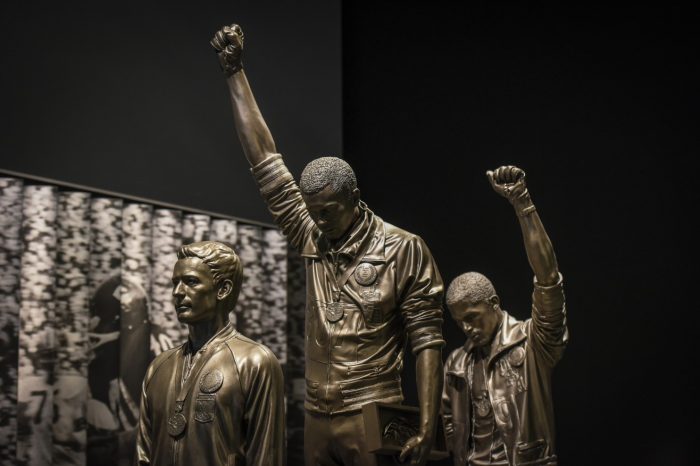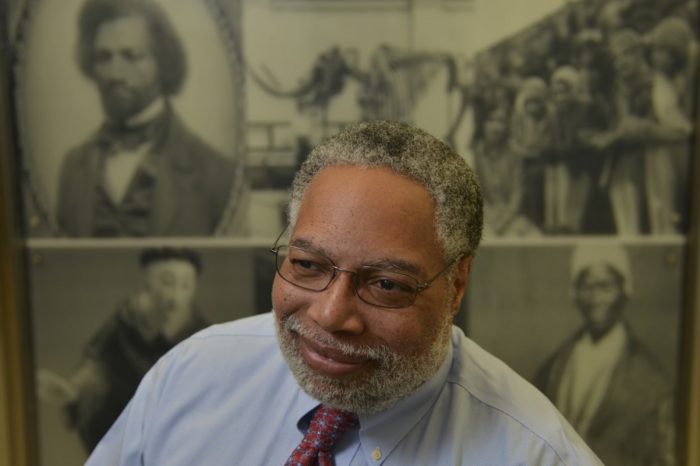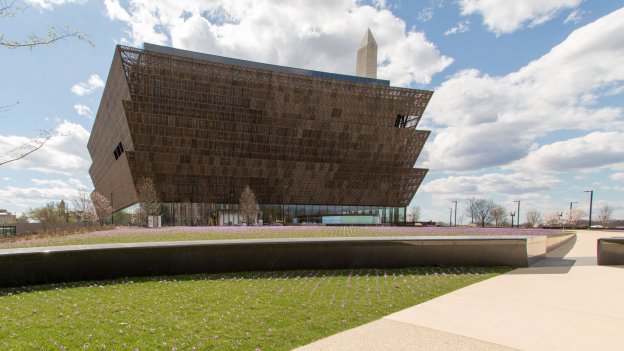A People’s Journey, a Nation’s Story: The Philosophy
The long-awaited opening of the Smithsonian’s National Museum of African American History and Culture generated worldwide attention. We’ve gathered some of the most interesting, compelling and thought-provoking coverage to show the philosophy behind the way the museum will view the American story through an African American lens.
Lonnie Bunch On Telling ‘The American Story Through An African American Lens’
WAMU-FM, August 16, 2016
When it opens in September, the National Museum of African American History and Culture is expected to offer a global perspective on the African American experience, starting in Africa before slavery. But Founding Director Lonnie Bunch tells WAMU reporter Ally Schweitzer that he never set out to build “the black institution in the Smithsonian.” Read the transcript and listen to the interview from Ally Schweitzer for WAMU.
New museum honors the lives and culture of African-Americans
Fox News Sunday, Sept 18, 2016
Power Player of the Week: Lonnie Bunch, director of the National Museum of African American history and Culture. Watch the interview on Fox News Sunday.
The biggest challenge in opening up a national museum about African American history? How to talk about slavery
The Los Angeles Times, Sept 16, 2016

The National Museum of African American History and Culture in Washington, DC. Photograph: Jim Lo Scalzo/EPA
After he was named director of the Smithsonian’s National Museum of African American History and Culture 11 years ago — before planning had begun for its 400,000-square foot bronze-colored building on the National Mall, when it still had to raise more than half its $540 million price tag, when it had not yet a single one of its 37,000 artifacts — director Lonnie G. Bunch III struggled with questions about the monumental endeavor.
How much did Americans want to confront slavery? Read more from Jaweed Kaleem for the Los Angeles Times.
Magnificent, awful, profound: The stories the new African American museum will tell
The Washington Post, Sept. 16, 2016

A statue depicting track and field athletes Tommie Smith, center, and John Carlos, right, at the new National Museum of African American History and Culture. (Photo by Jahi Chikwendiu / The Washington Post)
Robert L. Wilkins, a judge on the U.S. Court of Appeals for the D.C. Circuit, served on the presidential commission created by Congress to plan the National Museum of African American History and Culture. His book on the creation of the museum, “Long Road to Hard Truth,” was released this month. Read John Wilkins’ essay for the Washington Post.
Full interview: Lonnie Bunch, director of Smithsonian African American History Museum (Video)
PBS: Newshour, Sept. 21, 2016
Gwen Ifill sat down with Lonnie Bunch, the director of the Smithsonian Museum of African American History and culture, which is due to open this weekend. Bunch says that leading the museum has been a humbling experience, and that he’s often stopped by people on the street who are excited about the museum’s opening. “Once you have this museum on the mall, it’s going to be there as long as there’s an America,” Bunch said. Read more from Gwen Ifill for PBS and watch the complete interview.
Lonnie Bunch: Even if you’re white, ‘the story of slavery is still your story’
The Washington Post, Sept. 23, 2016

Lonnie Bunch, founding director of the Smithsonian’s National Museum of African American History and Culture. (Jahi Chikwendiu / The Washington Post)
In 2003, President George W. Bush signed the bill that made the national African American history museum a legal reality. But that was the easy part.
“The biggest part of this job was to make people believe that this could happen. But what it really meant was that I had to find ways to believe it. And to take risks,” Bunch told me at the museum last week. “For example, when we did the groundbreaking, we didn’t have all the money. So what I did is, well, let’s make the hole anyway because I knew that Congress wouldn’t let a hole stand next to the Washington monument.” Read more from Jonathan Capehart for The Washington Post.
The National Museum of African American History and Culture Opens, Housing ‘Sacred’ Objects
The Root, Sept. 24, 2016

Steel and glass create patterns and reflections inside the Smithsonian’s National Museum of African American History and Culture during the press preview on the National Mall in Washington, D.C., on Sept. 14, 2016. (Chip Somodevilla/Getty Images)
In an interview with The Root, the museum’s deputy director, Kinshasha Holman Conwill, shares the stories within. Read more from Ericka Blount Danois for The Root.
‘Allowing America to Confront Its Tortured Racial Past’
The Atlantic, Sept. 28, 2016

The Atlantic Washington Ideas Forum at the Harman Center, Tuesday, September 27 – Thursday, September 29, 2016, Washington, DC. (Photo by Max Taylor)
The Smithsonian Institution museums that dot the National Mall in Washington, D.C. memorialize a certain version of American history. The National Museum of African American History and Culture, which opened earlier this month, is now a part of that official narrative. It recounts black history in the United States, and in doing so, presents a narrative about the story of America. Read more from Clare Foran for The Atlantic.
Posted: 21 October 2016





